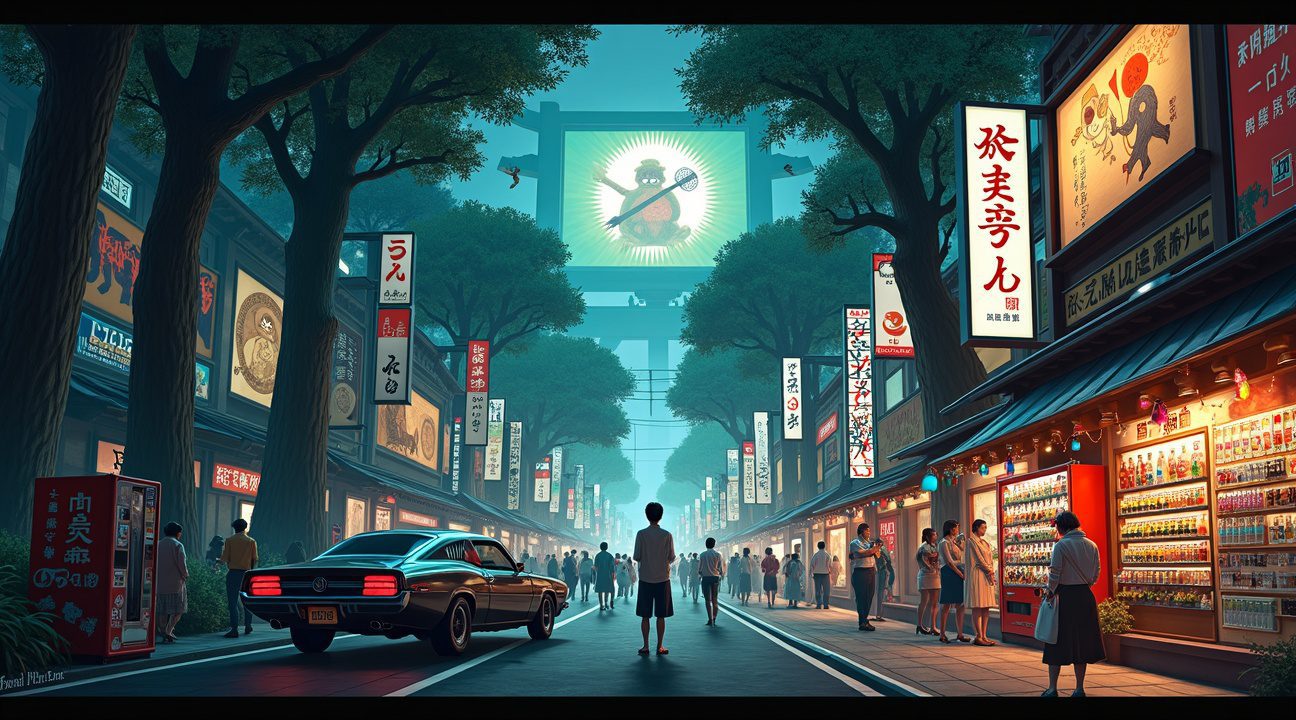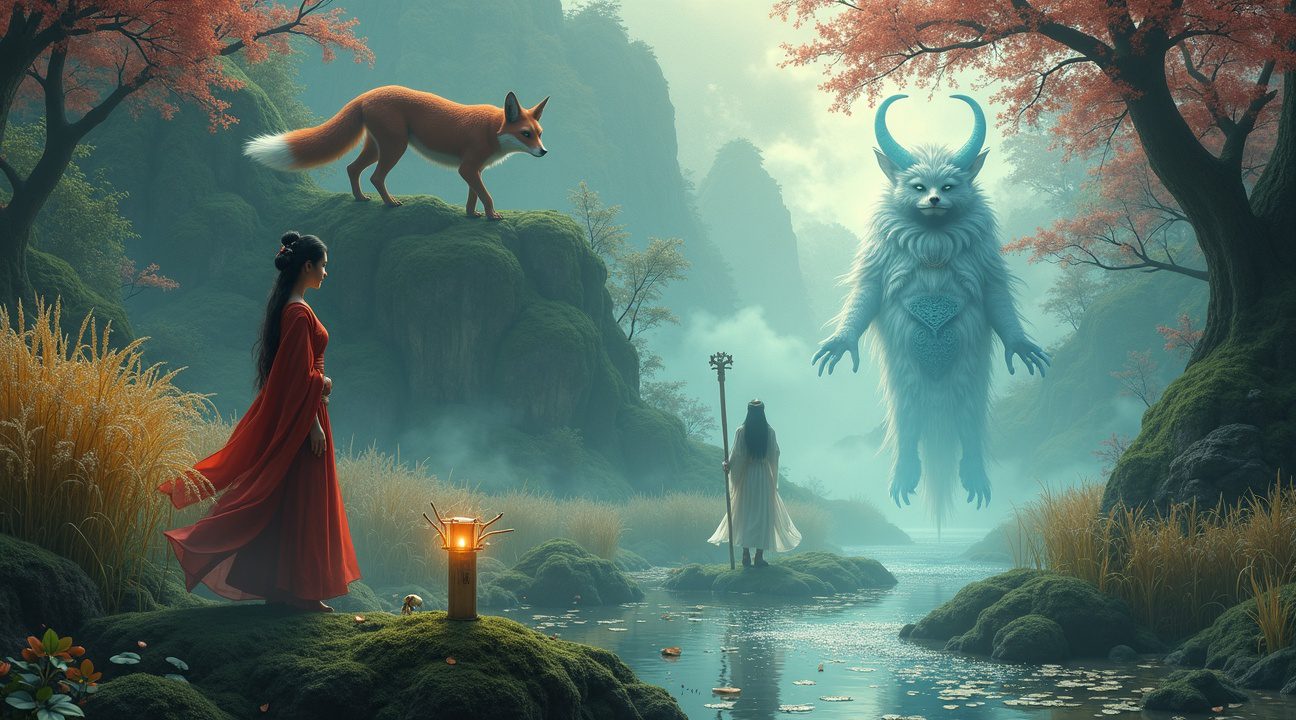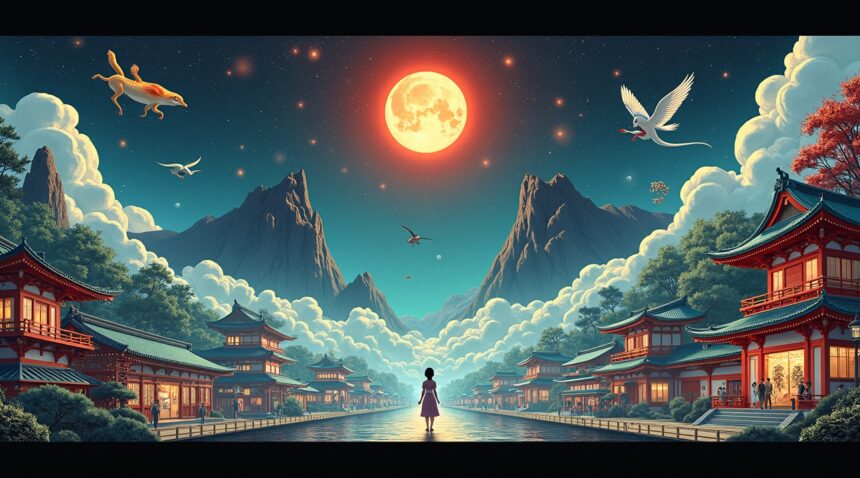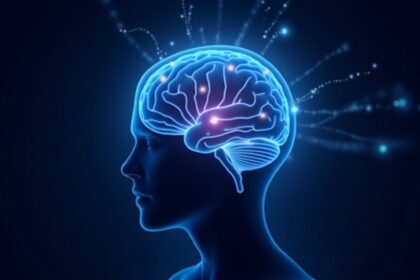Yokai have transformed from ancient Japanese spiritual entities into global cultural phenomena, demonstrating how traditional folklore can successfully adapt to modern entertainment while maintaining its essential cultural significance.
This evolution from formless spirits documented in 8th-century texts to internationally recognized characters in anime, video games, and Studio Ghibli films represents one of the most successful cultural exports in contemporary Japanese history.
Key Takeaways
- Yokai represent complex supernatural beings that surpass Western monster classifications, encompassing mysterious phenomena, unexplainable events, and entities that exist on a moral spectrum rather than simple good versus evil categories.
- Shigeru Mizuki’s “GeGeGe no Kitaro” manga series revolutionized yokai culture after World War II, selling over 50 million copies and establishing these ancient spirits as beloved characters in modern entertainment.
- Traditional yokai serve essential spiritual and cultural functions in Japanese society, acting as bridges between physical and metaphysical worlds through animistic beliefs and providing explanations for unexplainable phenomena.
- The Edo Period marked a crucial transformation in yokai documentation, with artist Toriyama Sekien’s illustrated encyclopedias standardizing visual representations and creating the foundation for modern interpretations.
- Contemporary yokai culture generates significant economic impact through entertainment, tourism, and merchandise, with properties like “Spirited Away” grossing over $229 million domestically and demonstrating the commercial viability of folklore-based content.
From Ancient Spirits to Global Pop Culture Icons: How Yokai Conquered the Modern World
The transformative power of manga changed everything for yokai folklore after World War II. Shigeru Mizuki, a visionary artist who lost his left arm during the war, breathed new life into these ancient spirits through his groundbreaking comic series GeGeGe no Kitaro. This revolutionary work didn’t just entertain readers—it fundamentally shifted how Japanese society viewed their supernatural heritage.
GeGeGe no Kitaro made its debut in 1960 and went on to achieve remarkable commercial success, selling over 50 million copies as of 2024. Mizuki’s approach differed drastically from previous portrayals of yokai, presenting them as complex characters rather than simple monsters or cautionary figures. His work established him as the most influential figure in yokai’s 20th-century revival, creating a bridge between traditional folklore and contemporary storytelling.
Modern Entertainment and Cultural Dominance
Today’s entertainment landscape showcases yokai influence across multiple mediums. Studio Ghibli films like My Neighbor Totoro and Spirited Away feature creatures that draw heavily from yokai mythology, introducing these supernatural beings to international audiences. Spirited Away alone grossed over 30.4 billion yen (approximately USD $229 million) domestically in Japan since 2001, demonstrating the commercial viability of yokai-inspired content.
Video games have embraced yokai themes with particular enthusiasm. Titles featuring these creatures span from traditional role-playing games to modern mobile applications, each interpretation adding new layers to the evolving mythology. The gaming industry’s adoption of yokai has created fresh narratives while honoring ancestral stories.
Brand collaborations and merchandise have further cemented yokai’s place in contemporary culture. Companies regularly incorporate yokai imagery into product designs, from fashion items to household goods. The Amabie charm experienced a surge in popularity during the pandemic, with businesses and individuals adopting this protective yokai as a symbol of hope and healing.
Japanese currency itself bears yokai influence, with certain designs incorporating elements that reference these mythological beings. This official recognition represents how deeply yokai have embedded themselves into national identity.
Art exhibitions featuring yokai themes regularly tour international venues, showcasing both traditional depictions and contemporary interpretations. These exhibitions serve as cultural ambassadors, introducing global audiences to Japanese folklore while demonstrating the artistic evolution of these ancient stories.
The global reach of anime has accelerated yokai’s international recognition. Streaming platforms now carry dozens of series that feature yokai characters, from action-packed adventures to slice-of-life comedies. This widespread distribution has transformed regional folklore into worldwide entertainment.
Contemporary Japanese identity finds deep resonance with yokai as symbols of resilience, mystery, and the successful reconciliation of tradition with modernity. These creatures represent Japan’s ability to preserve its cultural heritage while adapting to technological advancement and global influence. Artists, writers, and creators continue drawing inspiration from yokai mythology, proving that ancient wisdom remains relevant in today’s fast-paced world.
The soft power generated by yokai culture extends Japan’s cultural reach far beyond its borders. Tourism campaigns frequently feature yokai themes, encouraging international visitors to explore regions associated with specific legends. Local festivals celebrating yokai attract both domestic and foreign tourists, generating economic benefits while preserving cultural traditions.
Modern interpretations of yokai often reflect current social concerns and technological anxieties. Contemporary artists reimagine traditional spirits through the lens of urbanization, environmental challenges, and digital transformation, ensuring these ancient beings remain relevant to new generations.

What Yokai Actually Are: Beyond Western Concepts of Monsters and Demons
I’ve discovered that yokai represent something far more fascinating than simple monsters lurking in the shadows. These supernatural entities emerge from Japanese folklore as complex beings that embody the mysterious and unexplainable aspects of existence itself. The term derives from two powerful kanji characters: 妖 (yo) meaning bewitching or mysterious, and 怪 (kai) signifying wonder or mystery, creating the concept of “strange apparition” or “unexplainable phenomena.”
The Broader Spectrum of Supernatural Experience
Yokai transcend Western monster classifications by encompassing feelings of awe, wonder, confusion, and inexplicable occurrences that define human experience with the unknown. While Western folklore often features creatures like fairies, trolls, leprechauns, or goblins, Japanese culture casts a much wider net. Anime culture has helped introduce these concepts globally, but the original framework characterizes nearly all supernatural or inexplicable events as potentially yokai-related phenomena.
Consider how this differs from Western demonology, which typically creates strict divisions between good and evil entities. Yokai operate on a spectrum that defies simple moral binaries, ranging from malevolent spirits to mischievous tricksters to completely benign presences that simply exist alongside humans.
The Vast Taxonomy of Mystery
Japanese folklore has documented over 200 distinct types of yokai, each with countless regional variations and modern reinterpretations that continue evolving today. This extensive catalog includes:
- Shapeshifting creatures
- Household spirits
- Nature guardians
- Entities that manifest human emotions or natural phenomena
Some yokai explain why milk sours unexpectedly, others embody the feeling of being watched in empty rooms, and still others represent the personification of specific locations or objects.
I find it remarkable how yokai serve as cultural bridges between the rational and irrational, providing explanations for experiences that resist logical interpretation. They don’t simply terrorize or threaten—they illuminate the mysterious aspects of daily life that remain beyond human understanding. This fundamental difference sets yokai apart from Western monster archetypes and reveals why they’ve maintained such enduring relevance in Japanese culture and increasingly in global entertainment media.

The Legendary Yokai: Powers and Personalities of Japan’s Most Famous Spirits
I find that understanding yokai requires appreciating their diverse supernatural abilities, with shapeshifting standing as their most prevalent trait. These remarkable spirits possess an array of powers including spirit possession, transformation, and weather manipulation that have captivated Japanese culture for centuries.
Supernatural Abilities That Define Yokai
Shapeshifting remains the cornerstone ability among these supernatural beings, allowing them to take on human forms or animal appearances at will. Spirit possession represents another formidable power, enabling yokai to inhabit and control human hosts. Transformation abilities extend beyond simple form changes, often involving complete alterations of reality around them. Weather manipulation demonstrates their connection to natural forces, with many yokai capable of summoning storms, snow, or fog to achieve their purposes.
Five Iconic Yokai and Their Distinct Characteristics
The following legendary spirits showcase the incredible diversity within yokai mythology:
- Kappa – These aquatic, frog-like creatures inhabit rivers and ponds, notorious for their strength in wrestling contests and their dangerous habit of drowning unsuspecting swimmers. Despite their fearsome reputation, some Kappa display benevolent tendencies, particularly when shown proper respect through traditional offerings.
- Tengu – Bird-like mountain spirits command respect as martial protectors of sacred spaces. Their deep connection to nature and exceptional shapeshifting abilities make them formidable guardians of mountainous regions, often serving as teachers of martial arts to worthy humans.
- Kitsune – Fox spirits stand out for their exceptional intelligence and sophisticated transformation abilities, frequently appearing as beautiful women to interact with humans. Their role as messengers of Inari, the deity of rice and agriculture, elevates their status beyond mere tricksters to respected spiritual intermediaries.
- Yuki-onna – Snow spirits embody both the beauty and peril of winter, manifesting during blizzards to encounter travelers. Their ethereal appearance often lures victims into deadly situations, representing nature’s dual capacity for wonder and destruction.
- Ijin – These enigmatic outsiders originate from realms beyond our world, sometimes displaying benevolent intentions that challenge typical yokai stereotypes. Their existence demonstrates the permeable boundaries between different spiritual dimensions in Japanese mythology.
Each of these legendary beings reflects specific aspects of Japanese cultural understanding about the supernatural. Kappa teach respect for water’s dangers while acknowledging that proper protocols can lead to peaceful coexistence. Tengu represent the wisdom found in nature’s wild spaces and the importance of protecting sacred locations.
Kitsune exemplify intelligence over brute force, using their wit and transformation skills to navigate complex relationships with humans. Their association with agriculture connects them directly to human survival and prosperity. Anime adaptations have introduced these fox spirits to global audiences, expanding their cultural influence beyond Japan.
Yuki-onna serves as a reminder that nature’s beauty often conceals deadly threats, particularly relevant in Japan’s harsh winter conditions. Their stories function as cautionary tales about venturing unprepared into dangerous weather.
Ijin present the most mysterious category, representing encounters with truly alien entities that don’t conform to typical yokai patterns. Their varied nature suggests that the spirit world contains beings beyond human comprehension, maintaining an element of cosmic mystery within yokai lore.
These five yokai demonstrate how Japanese folklore uses supernatural beings to explore human relationships with nature, death, wisdom, and the unknown. Their enduring popularity in modern media reflects their continued relevance as symbols of forces beyond human control and understanding.
Understanding these legendary spirits provides insight into Japanese cultural values, environmental awareness, and spiritual beliefs that have shaped the nation’s identity for generations. Their complex personalities and varied motivations make them far more than simple monsters or tricksters.

The Sacred Role of Yokai in Japanese Spiritual Life
I’ve discovered that yokai hold a position far more significant than mere folklore creatures in Japanese culture. These supernatural beings are deeply woven into the spiritual fabric of Japan, serving as bridges between the physical and metaphysical worlds through ancient animistic traditions that continue to influence modern life.
Animistic Foundations and Spirit Classification
Animism forms the cornerstone of traditional Japanese spirituality, where I observe spirits dwelling within all living and non-living entities—from towering trees to humble household objects. This belief system doesn’t automatically classify every spirit as yokai. Instead, ancient traditions recognized two primary categories:
- Nigi-mitama: Benevolent spirits that bring fortune and protection.
- Ara-mitama: Violent counterparts that unleash chaos and misfortune.
The transformation between these spiritual states reveals the dynamic nature of yokai existence. Traditional rituals called chinkon were performed specifically to convert malicious spirits into benevolent ones, creating a spiritual balance within communities. When these sacred practices failed or spirits were neglected entirely, they often evolved into yokai—supernatural entities that demanded acknowledgment through their disruptive presence.
Cultural Integration Through Ritual and Protection
Early polytheism elevated yokai to positions of cultural prominence, establishing them as entities requiring respect rather than dismissal. Communities developed elaborate festivals and rituals designed to appease yokai, particularly those believed to inhabit dangerous or sacred locations such as rushing rivers, dense forests, and towering mountains. These practices weren’t merely superstitious—they represented sophisticated systems for understanding and managing unexplained phenomena.
The protective power of certain yokai continues to manifest in contemporary Japan, especially during times of crisis. Amabie, a prophetic yokai traditionally drawn to ward off plagues, experienced a remarkable resurgence during recent pandemic times. Modern Japanese citizens still purchase charms and illustrations of Amabie at shrines, seeking protection against illness just as their ancestors did centuries ago. This practice demonstrates how cultural traditions adapt while maintaining their spiritual essence.
Disease and disaster explanations frequently involved yokai intervention, providing communities with frameworks for comprehending otherwise inexplicable events. Paranormal explanations served crucial psychological and social functions:
- When people drowned in rivers, communities often attributed these tragedies to Kappa, water-dwelling yokai known for pulling swimmers beneath the surface.
- Such explanations enabled groups to process grief while establishing practical safety measures around waterways.
The sacred role of yokai extends beyond protection and explanation into active spiritual guidance. These entities often served as omens, warning communities of impending dangers or changes. Their appearance in dreams, unusual behavior patterns, or physical manifestations were interpreted as divine communications requiring immediate attention and appropriate ritual responses.
Modern shrine practices continue honoring these ancient connections, with specific yokai-related protective items available for purchase throughout Japan. Visitors can:
- Acquire talismans featuring beneficial yokai.
- Participate in festivals celebrating their protective powers.
- Engage in simplified versions of traditional appeasement rituals.
The enduring presence of yokai in Japanese spiritual life reflects a sophisticated understanding of the unseen forces that influence human existence. Rather than relegating these beliefs to historical curiosity, contemporary Japanese culture maintains active relationships with yokai through adapted practices that honor ancestral wisdom while addressing modern concerns. This integration demonstrates the remarkable flexibility of animistic traditions in providing spiritual guidance across generations.

From Ancient Myths to Edo Period Encyclopedias: The Evolution of Yokai Documentation
Yokai origin stories stretch back to Japan’s earliest written records from the 8th century, where these supernatural entities first appeared in historic texts and creation myths. During these formative centuries, spirits existed as formless, invisible forces that influenced daily life without concrete visual representation. Early documentation treated these phenomena as natural parts of existence rather than distinct creatures requiring classification.
The Edo Period: A Cultural Renaissance for Japanese Folklore
The Edo Period (1603–1868) transformed how Japanese society understood and documented supernatural beings. This era witnessed an unprecedented flourishing of yokai culture, shifting these ancient spirits from vague concepts into well-defined entities with specific characteristics and appearances. Urban centers became hotbeds of supernatural storytelling, with merchants and artisans sharing tales that would eventually reach scholarly attention.
Toriyama Sekien’s Revolutionary Documentation
Artist Toriyama Sekien revolutionized yokai documentation through his groundbreaking illustrated encyclopedias during the late Edo period. His publications standardized supernatural creature depictions and popularized yokai stories across social classes. Sekien’s detailed artwork gave physical form to previously abstract spiritual concepts, creating visual references that influenced centuries of subsequent folklore interpretation.
These Edo art masterpieces established consistent imagery for hundreds of supernatural entities, transforming oral traditions into accessible visual narratives. Sekien’s encyclopedias functioned as both entertainment and educational resources, helping ordinary citizens identify and understand various types of strange apparitions they might encounter. His systematic approach treated yokai classification with scholarly rigor while maintaining the mystical appeal that made these creatures culturally significant.
The transition from ancient formless spirits to Edo period’s detailed creature catalogs reflects Japan’s broader cultural evolution. Global phenomenon of supernatural storytelling found particular expression through Japanese artistic traditions that combined religious beliefs with popular entertainment. Sekien’s work established visual standards that continue influencing modern interpretations of traditional folklore, bridging ancient spiritual concepts with contemporary understanding of supernatural entities.
This documentation evolution demonstrates how cultural artifacts preserve and transmit traditional knowledge across generations. The Edo period’s systematic approach to cataloging supernatural beings created lasting frameworks for understanding Japanese folklore, ensuring these ancient traditions remained accessible to future audiences while maintaining their essential mysterious character.
How Yokai Help Explain the Unexplainable in Japanese Society
I’ve observed how yokai serve as fundamental cultural bridges between the known and unknown in Japanese society. These supernatural beings provided essential frameworks for communities to process mysterious events that defied explanation through available knowledge. When diseases swept through villages or natural disasters struck without warning, yokai offered tangible explanations that helped people cope with uncertainty and fear.
Traditional Japanese communities relied on yokai to make sense of phenomena that pre-modern science couldn’t address. Sudden illnesses, crop failures, earthquakes, and unexplained deaths all found their explanations through the lens of supernatural intervention. Rather than leaving communities helpless against incomprehensible forces, yokai beliefs provided actionable understanding—people could perform rituals, make offerings, or take protective measures against specific supernatural entities.
Collective Processing Through Shared Mythology
The cultural explanation system built around yokai created powerful tools for community understanding and healing. I find it fascinating how these beliefs allowed entire groups to process collective trauma through shared mythological frameworks. When tragedy struck, communities didn’t face isolation in their grief or confusion—they had common language and understanding to explain their experiences.
Yokai beliefs served several crucial social functions:
- They transformed random, senseless events into purposeful actions by supernatural beings
- They provided communities with specific rituals and practices to address problems
- They created shared vocabulary for discussing difficult experiences
- They offered hope that supernatural problems could have supernatural solutions
These traditional beliefs didn’t just explain individual mysteries—they reinforced social bonds through common understanding. Much like how anime captured the world through shared storytelling, yokai stories created unified cultural responses to life’s uncertainties.
Natural phenomena that seemed chaotic or threatening became manageable through yokai interpretation. Mountain spirits explained avalanches, water spirits caused floods, and disease spirits brought illness. This systematic approach to understanding allowed communities to maintain psychological stability during crises. Rather than feeling powerless against incomprehensible forces, people could identify specific supernatural causes and respond accordingly.
The enduring power of yokai lies in their ability to transform the incomprehensible into the manageable. By providing cultural explanations for life’s mysteries, these supernatural beings helped Japanese communities maintain cohesion and purpose even during their darkest moments.

Sources:
Yokai.com, “Introduction to Yōkai”
Sabukaru, “Shadow of the Yokai: Japanese Myths, Folklore and Their Impact”
Japan House, “Yōkai and Amabie”
Japanese Gallery, “Japanese Folklore – An Introduction to Yokai”
Wikipedia, “Yōkai”
JapanBite, “Discovering the Enchanting World of Japanese Yokai”
Japan Objects, “What is a Yokai? 30 Mysterious Japanese Demons”


